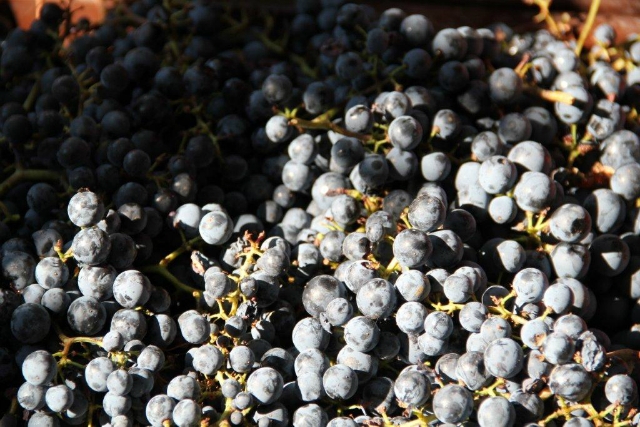Continuing TCN’s look at the indigenous grapes of Croatia on September 29, 2016, on the red grape usually mentioned only as “the other parent of Plavac Mali”
Dobričić is another one of the significant indigenous red wines of Dalmatia. Well, at least locally significant, since it was the variety that was (most probably accidentally) crossed with Crljenak Kaštelanski (the rest of the world knows that variety as zinfandel) to produce the grape that has become the pride and joy of most Dalmatian winemakers – Plavac Mali. So, Dobričić has since suffered a fate similar to many other famous parents: it’s mostly known as “Plavac Mali’s other parent”, and while it was a popular and quite abundant variety at a narrow region once, it has gotten almost lost and forgotten.
The region where it grew (and still grows) is limited to the several central-dalmatian islands of Šolta, Čiovo and small regions of Brač. It owed some of its fame to the fact that its grapes produce extremely dark red, almost purple wine, and sometimes it’s still called “the darkest wine of Dalmatia”. In the past it was rarely made into varietal wine, but was used to give colour to blends with other red wine varieties that had less distinct colouring, and was even exported to France for that exact purpose! The popularity was lost because the variety was (and still is) extremely susceptible to downy mildew, which sometimes brings the yields to nothing.
These days there are only a few Dobričić vineyards, mostly on the island of Šolta, and a lot of effort has been put into revitalizing the famous old wine. The varietal wine is unexpectedly low in alcohol, as it doesn’t produce much sugar, and extremely low in acids: sometimes those are below the legally allowed limit! The tannins are, as one would expect, rather high and the wine is somewhat sour-cherry-bitter and tart, and needs longer aging in the oak wood to show its full potential.
So, if you want to observe that wonderful colour and taste Dobričić, where can you do that? Well, on the island of Šolta, a few producers are making it as a varietal wine (although with 10-15% of other varieties, to improve the acid profile of Dobričić) and not a lot of it is bottled, although that is steadily improving. The winemakers working hard on improving the position of Dobričić on the market and the quality of the wine are Vicko Kaštelanac from Gornje Selo, Tomislav Purtić from Srednje Selo and Vicko Burica from Grohote (all villages on Šolta). Kaštelanac has also been producing the rose wine of the most amazing colour and mild flavour, perfect to be served cooled for easy drinking on a hot summer’s evening.










